Ground covers are an important part of any landscape process. Low maintenance ground covers will do for you, what shrubs and other prized plants wont do for you-and still demand very little of your time and energy.
What are ground covers?
Ground covers are low growing plants, often small in size, that spread along the ground. They don’t grow beyond 1 foot (30cm) and will often form a low-growing dense layer of vegetation that covers the ground.
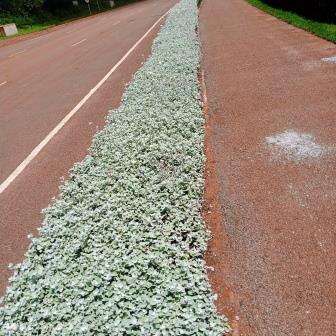
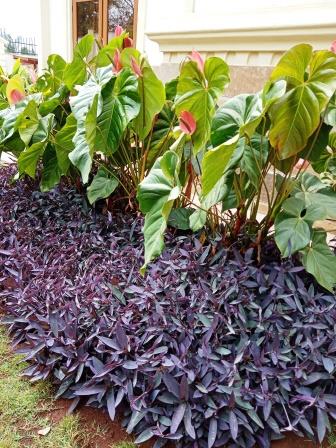
Why choose low growing maintenance ground covers
When you use low maintenance ground covers in your landscaping projects, you reduce the cost of the project, use minimal time on garden care and of course less energy tending to your gardens.
What are the advantages of using low maintenance ground covers?
Mulch
Ground covers are a living mulch in the garden as they completely cover the ground. When they do so, they suppress weeds.
Erosion control
A major advantage of ground covers in the landscape is erosion control. Low growing and carpet forming like aptenia form a thick dense mass such that water run off on a slope is considerably reduced, thereby controlling erosion.
Biodiversity and wildlife in the garden
Ground covers are important food sources for insects . If you are dreaming of a beautiful garden teaming with birds and butterflies, you need lots of insects and a healthy ecosystem. The sun-birds in your garden are not there to primarily feed on nectar, but rather on insects.
Aesthetic.
Who hasn’t admired a bed, border or lawn cutely edged with ground covers? In landscaping, bare soil is ugly to the eye and if you cant afford those pricey plants, ground covers will be your saving grace as they are soft to the eye. Planted to contrast or compliment the main plants, ground covers are like the icing on a cake- they finish off what the main garden desires to be.
Water conservation
Because ground covers act as living mulch, they minimize moisture loss . A carpet of ground covers prevents the sun’s rays from directly heating the ground. You will never find areas covered with ground covers dry and caked from drying out in the sun.
How to select low maintenance ground covers
Growth rates
Some ground covers like setcrasia purple are gallopers. Even without being tended to, they will grow wildly and if untamed will spread beyond the desired areas. For such grow them in specially designated beds or areas.
Evaluate the site conditions
Some low ground covers will grow in stony areas with thin soil layers. Others will require deep fertile soils . Echeveria requires full sun, but aptenia will grow in shade or full sun. Know the growing needs of each ground cover before using it.
Climate
If you are in the tropics, you can virtually use any ground cover.However in the temperate regions some plant covers will not tolerate extreme cold.
Common Low maintenance Ground covers
Aptenia cordifolia
This is a prostate free branching perennial succulent. It has cylindrical greyish-green stems and broadly ovate fleshy bright green leaves . ‘Variegata’ species has leaves with creamy margins.
In summer and autumn, it flowers small -daisy red flowers, solitary or borne in threes with ovoid fruits. Aptenia grows in both shade and full sun.
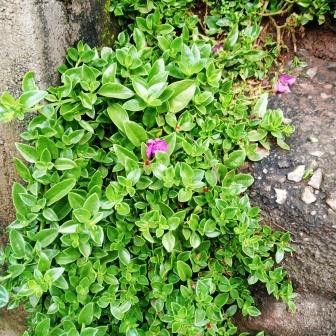
Ajuga reptans bugle
A creeping evergreen perennial that spreads rapidly. It has attractive dark-green leaves and gives dark blue flowers. They are clump forming and thrive in shady habitats . They are excellent groundcovers as th or near water spread freely from stolons. Burgundy Glow has silvery green leaves suffused deep wine -red.
Hosta (spp)plantain lily.
Hosta is much beloved clump-forming perennial from the sun baked,volcanic cliffs, woodland and alpine meadows of china,japan,korea and e. Russia. Hostas are grown for their bold foliage. The leaves may be green,yellow blue or variegated and are often glaucous. Hostas are full hardy plants. Grow them as grouncovers under a deep rooted tree, in a mixed border or herbacious border.
Grow them fertile moist but well draied soils with shelter from cold drying winds. Of all rhe numerous hostas, I will go for the ‘Blue blush’ any day.
Vincas
Vincas are prostrate, evergreen mat forming ground covers with long trailing dark green or variegated leaves. They are grown for their showy long stalked star- like or salverform flowers. Vinca major(greater periwinkle) gives blue-vioelt or dark violet flowers. Vinca major on the other hand bears blue-violet, sometimes pale blue,reddish purple or white flowers.
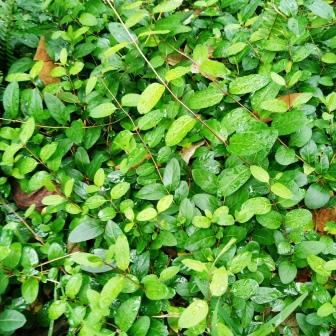
Liriope muscular
Liriope is a tufted evergreen and semi evergreen perennial found in usually acidic woodlands habitats in China, Vietnam and Taiwan and Japan. They have arching linear and grass -like leaves that form dense clamps or mats. Popular as ground covers as they easily multiply from rhizomes or tubers. Liriope is a low maintenance and hardy ground cover.
Plectranthus forsteri ‘marginatus’
Plectranthus is aan evergreen perennial cultivated for its foliage and flowers. It starts off as an erect plant becoming trailing or spreading wit growth .The leaves have scalloped, sometimes toothed or wavy margins. As they multiply easily, they are often grown as groundcovers. If you have an exposed ground, you can use plectranthus to fill it out.

Semperivums(house leek)
This mat forming succulents can be a show piece in your garden. They bear rosettes of thick, pointed leaves often with bristle fringed margins. Flowers can be white, below, red or purple. Semperivums occur in more than 40 species. As ground covers use them in a rock garden or to cover the bare of a shrub or tree.
Gazania regens
These are low growing annuals or perennials . They bear large brightly colored daisy-like flowers with dark centred flower heads. A major advantage of gazania is that they tolerate coastal conditions . They are hardy to frost tender. Grow them in light sandy, well drained soil in full sun.

Chlorophytum comosum Vittatum
These are evergreen perrennials with fibrous or fleshy roots. Those in cultivation are from a variety of habitstas in S. Africa and W. Africa. They are clump forming . The leaves are linear, ovate lance shaped, basal or strape shaped. Excellent ground covers especially in shaded areas as they soon colonize bare ground. They are also popular foliage house plants as they tolerate a wide range of conditions.

Lantana montevidensis
Also known as trailing lantana, this ground cover occurs in white, purple and yellow colours. It is one of the hardiest ground covers and a popular option for us whenever we work in dry areas. A mat forming groundcover grown for its attractive and flagrant, small tubular flowers. These lantanas are ever flowering when grown in the warmer climates.


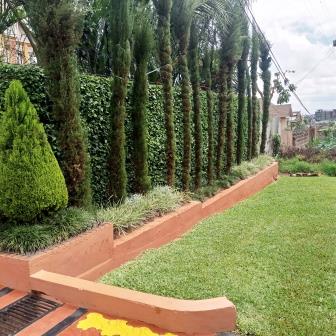
Leave a Reply